|
Contemporary use of this phrasing often alludes to engaging in a certain experience with a calm state of attentiveness, guided by intuition rather conscious thought or effort. It is also interpreted as the activity itself allows a practitioner to achieve a calmed state by engaging in the activity. While the Western interpretation of Zen may be more of a mix of Buddhism, Taoism, and Confucianism influences, it’s roots first sprouted in Zen Buddhism in the 5th century CE. Zen Buddhism focuses heavily on the use of meditation to achieve enlightenment and understanding “the meaning of life”. Many tree climbers experience a state of peace and tranquility when they are high in the branches above. Having a calmed state of mind when sitting in the top of a tree lends itself to practicing mindfulness and meditation. Given meditation involves clearing the mind, the climbing process itself can provide a point of focus, resulting in one’s mind letting go of the everyday worries and concerns that plague our thoughts in our daily routine. Therefore, some people see climbing as meditative in its nature. The Path to Enlightenment In their simplest forms, “The Zen of”, Zen Buddhism, and any of the branches or schools of Buddhism are focused on reaching enlightenment; or attaining the full comprehension of the true nature of all things and life itself. The original Buddha put forth that life is filled with struggle & suffering, which occur when we harbor desires, are guided by our ego, or behave in immoral ways. He went on to present a path we can follow to reduce suffering and find ultimate happiness and inner peace. This path is the noble Eightfold Path. Through following the behaviors in the Eightfold Path, one can escape the suffering associated with the human experience. Escape suffering, reach nirvana, become enlightened. Zen Buddhism emphasizes the practice of meditation as being the key to reaching enlightenment, whereas meditation is just one of the 8 steps put forth by the Buddha. The 8 components in the Eightfold Path include having the right:
Upon considering “the Zen of Tree Climbing”, I find a natural how the philosophical principles in the Eightfold Path are manifested in the tree climbing process.  Climbing the Eightfold Path RIGHT VIEW: Having the right view refers to having the understanding that your actions have consequences, which can lead to suffering. Therefore, you should pursue the knowledge that will help you see and understand things as they really are as this will help you steer clear of suffering. If you can picture yourself standing at the base of a tall tree, looking up at the branches high above, it’d likely strike you that climbing the tree could result in injury. Most of us are not as carefree, or oblivious to consequences as we were as kids. Knowing there is risk involved is usually enough reason for many people to not even consider heading up. With a little training and knowledge however, we can learn what we can look for and how to read subtle details to determine if a tree is suitable for climbing. We can also use this knowledge to make determinations on how to climb the tree while minimizing our risks for injury. It also helps to know that there is specialized equipment and how it can be used to climb tall trees and minimize the associated risks with being at-height. I’m sure you don’t need to have climbed a tree to imagine it being far more enjoyable and rewarding if we do so without injuring ourselves. Having the knowledge and understanding of how to determine if a tree is suitable for climbing can help minimize your exposure to risk of injury & suffering.  RIGHT THOUGHTS/INTENTION: When it comes to fostering the right thoughts or having the right intention, we are looking at cultivating healthy thoughts as they determine our state of mind. One of the biggest obstacles and hindrances new climbers encounter is comparing themselves to others. It appears that that some people are inclined to judge themself by comparing to others, yet how someone else is doing has no bearing on how you will do. It makes no difference if he is doing better than you or if she is climbing faster than you, your path is up your rope, not someone else’s. If your thoughts are focused on how other people are doing, especially if those thoughts are envious or negative in nature, you will lose focus of what is most important - your own progress & success. To reach your goal, you will need a positive mindset and your focus should be on your technique and driven by your motivations. Further, it appears to be reflex for some people to start right off the bat saying, “I’m not good at this” or “I can’t do it.” It’s been said, “whether you think you can or think you can’t, you’re exactly right.” That’s the power of thought. Positive thoughts cultivate a healthy mindset. RIGHT SPEECH: Right speech refers to refraining from divisive and abusive speech. Words of praise and encouragement have a positive impact on others who are headed up on their own journey. Such words can lift a person’s spirits and bring them joy. Whereas using words of criticism and judgement have the potential to negatively impact their psyche and performance. Think back to the idea above; how another person is doing has no bearing on whether you achieve success of reaching your goal. We can either use words of positivity or negativity, keeping in mind that your words also impact your mindset. Abusive language towards others will negatively impact your own well-being. Maintaining positive thoughts and verbalizing them has a synergistic and karmic effect on your own state of mind.  RIGHT ACTION: Right action is to refrain from unwholesome & harmful behavior. Instead, behave in accordance with truth and for the goodness of others. During a climb, we are interacting with the tree and other climbers. Given our reliance upon the condition of the tree to keep us safe, common sense tells us to respect the tree and refrain from causing injury or harming the tree for our own sake. Likewise, our actions should not be such that they cause harm to others, whether they are enjoying the area and tree from the ground or in the branches alongside us. This also goes for the animals and organisms that rely on the tree for food and habitat.  RIGHT LIVELIHOOD: Right livelihood refers to avoiding occupations that directly or indirectly harm others, in essence, provide for your needs in a way that is moral and respects all life. Climbing higher takes energy and therefore we often take breaks to catch our breath and rest our muscles. Once we stop on a branch for a breather, we are able to look beyond the branches and leaves that envelop us. Our field of view has expanded far beyond that which we could see from the ground. This elevated perspective lends itself to a broader understanding of where you are in relation to the ground below and where the tree is situated in relation to its surroundings and the community. Viewing the broader picture, we have the opportunity to see how everything interacts and is connected to something beyond just itself. Each individual has influence on everyone else, and it is in your control to be a positive influence on those you interact with and those who are impacted by your actions.  RIGHT EFFORT: Putting forth the right effort means that we should refrain from unwholesome thoughts. At the beginning of a climb, it is common to have a sense of apprehension. If you are overwhelmed by negative thoughts and emotions, you’re probably not going to leave the ground. Once you start your ascent though, your focus turns inward – your body and mind is fully engaged and focused on your climbing technique, the situation and the perceived risks you are putting yourself in, and the wide range of emotions you encounter. Any one of these challenges could become a distraction and a hindrance, and ultimately could have you heading back to the ground. Successfully reaching your goal and having a rewarding experience is very much dependent upon your ability to maintain a positive state of mind by keeping negativity from encroaching. RIGHT MINDFULNESS: The idea of right mindfulness involves actively contemplating sufferings in your body, feelings, and mind. Reaching the top of the tree, your efforts have brought you to your goal. As you sit up there taking it all in, your heart rate decreases. You can reflect on everything you encountered along the way. You are aware of obscure muscles you may have never realized where there. Sitting in the branches high above the ground, those types of thoughts eventually fade and you are able to sit, take in the view, and appreciate being where you are. You have the opportunity to appreciate all of the aspects you encountered along the way, everything around you, and yourself, without judgement. Having a cleared mind and being in this special spot elevated above all else is conducive to letting your mind enter a state of contemplation and mindfulness, where you can gain insight into your true self. Tree climbers refer to the time spent in this state of peace as “tree-time”.  RIGHT CONCENTRATION: Right concentration involves bringing awareness to ways in which you can address hindrances to your clearing of the mind and bring all aspects of the 8-fold path in harmony. Each of them supports and relies upon one another. You encounter a variety of thoughts and emotions during the ascent, from fears and feelings of unease being out of your comfort zone, to self-doubt. You can reflect upon each challenge you faced and how you dealt with them. If your focus remained centered on positive actions, thoughts, and words… …sitting with a cleared mind, you have the opportunity for active assessment in how you might be able to adjust different aspects of your technique and mindset in order to improve and strengthen the impact of your climbing experience or practice. Awakening Your True Nature The tree-time state of mind is calmed and quiet. Being in the moment, brings clarity of mind. Stay up there long enough and even this state of bliss and wonderment might begin to subside. Your physical, mental, and emotional states of well-being are in harmony. All is well, everything is perfect. You have the opportunity to experience total peace of mind and self. With a mind freed from desire and unwholesome thoughts, you can enter a state of perfect equanimity and wakefulness.
Climbing into the treetops can be a life-altering journey, one that might lead you to a state of samadhi and enlightenment. Even if you don’t experience that deeper state, most people walk away feeling a deeper connection to the natural world and quite possibly, insight into their true self.
0 Comments
Cold temperatures, shortened daylight hours, and lack of greenery can fool anyone into thinking there isn’t much reason to head outside in winter. It may seem like life and Nature have hit the pause button. Don’t be fooled. There is a lot going on out there! With less foliage present in the winter, there are many characteristics that become more apparent and less obscured by the sensory overload during the growing season. If you are not sure of what you are looking for, all you need to do is get out there and let your senses be the guide. SIGHT Fall leaf color is one of the more noticeable aspects of trees that people enjoy. One study estimated a 30-billion-dollar annual contribution to the tourism industries of the 24 states in the eastern U.S. alone. While the fall color change can be enjoyed through the windshield, there are many more details to enjoy when you slow down and spend time in the presence of a tree. Branches twist and wind their way to openings where their leaves can capture sunlight. This winding nature of the branches leads to an artistic framework. The abstract patterns can be enjoyed from a number of angles and perspectives, such as when winter leaf drop exposes the branching structure of deciduous trees. Bark color and textures vary greatly between species. River birch’s bark layers peel and curl along the trunk, revealing salmon colored inner bark. This attractive coloration and unique look make it a popular tree in landscapes. It may take on added winter interest if you do a little reading on a potentially useful characteristic of birch bark. Birch bark contains a compound that repels water, keeping the tissue dry. It is also flammable. A perfect combination when needing to start a campfire. 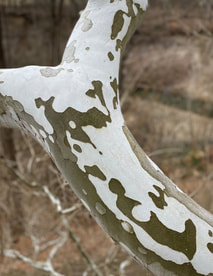 Sycamore's unique bark pattern Sycamore's unique bark pattern I particularly enjoy the texture, colors, and patterns of sycamore bark. The flaking bark leaves behind an evolving camouflage pattern formed as the green, gray, and tan papery layers exfoliate to reveal bright white inner bark on stems. In late winter, as we begin to anticipate the coming spring weather, the tiny leaf buds begin to swell and provide an early hint of the colorful season to come. This slight coloration is seen in the tops of the trees, contrasting against the brown and gray branches and blue skies. As winter draws to a close, we can enjoy the hint of red atop silver and red maples as well as the vibrant yellow cast along weeping willow twigs.. TOUCH In Wisconsin we are fortunate to have northern white cedars. They make my personal top-ten list of favorite tree barks! As northern white cedars age, their bark shreds into thin linear strips that run up and down the trunk. It has a slightly spongy feel in the outer layers of bark if you press into it with your fingertips and feels soft to the touch as you run your fingers along. There are numerous areas where we can get out and enjoy northern white cedar across Wisconsin, with one of my favorite areas being Newport State Park in Door County. Closer to my home in Waukesha County, Retzer Nature Center has a few groves of cedars around the park, one of which forms the centerpiece of the parking lot. Even your feet will notice the soft, cushiony feel of the leaf litter blanketing the ground under a grove of northern white cedar. You can enjoy their bark at any time of year, but spending time with them in winter has far greater impact for me as they maintain their green foliage through the winter. Immersing myself in a canopy of green when brown and gray dominate the winter color spectrum is like a breath of fresh air. SMELL I can seldom pass on the opportunity to bend down and smell a flower in bloom. Some have little to no fragrance. Some are enjoyable and others might not be so pleasant. Regardless, the experience of stopping to smell the flowers pulls me into the present moment. Even with the lack of flowers in the winter months, there are a few trees that I have a hard time passing by without taking in their pleasant fragrance. Some may have soothing effects and others I find energizing.  Nestled in the branches of a spruce, immersed in the pleasant scent Nestled in the branches of a spruce, immersed in the pleasant scent Several of our coniferous evergreens stimulate my sense of smell on winter hikes. Northern white cedar and eastern white pine are two of my favorites. Hemlock and spruce also do the trick. Walking near any one of these trees is likely to awaken your sense of smell. One place I enjoy immersing myself in these aromatic compounds is along the Ice Age Trail in Hartman Creek State Park. As the trail winds through rolling, forested terrain of oak, pine, and maple, you pass through pockets of spruce & hemlock. Even if you are not able to identify them by name, your nose will surely let you know it is time to slow down and breathe it all in! The essential oil and aromatherapy industries promote these compounds for their beneficial effects on us; like relaxation, invigoration, enhancing concentration, decreasing hyperactivity, reducing stress, easing tension, and clearing the mind. I use them in diffusers at home and in my office; but they are no substitute for heading out and enjoying them right from the source! SOUND I enjoy the distinct crunching sounds underfoot during a winter hike. Whether the trail is lined with fallen oak leaves or covered in freshly fallen snow, neither of these unique sounds were something I experienced while growing up in Puerto Rico and southern Florida. Another one of the sounds I go in search of in winter leads me to stands of eastern white pine. Not only does the foliage dampen the stark sounds from traffic and other noise pollution sources, the fine and feathery texture of the needles emit a soothing “whoosh” as the breeze passes through. Pair this calming sound with the soft texture of the needles and pleasant aroma and you may be able to understand why sitting on a branch near the top of an eastern white pine is one of my favorite places to be! TASTE Tastes related to trees is most readily appreciated by tasting the fruits, seeds, and nuts. Therefore, this sense is more commonly enjoyed during the growing season as opposed to winter. One of my favorite tasting experiences was the day I sat along the bank of a tributary to the Des Moines River in central Iowa. I was sitting amongst a stand of black walnut trees in late summer as leaves and walnuts fell around me. I’ve never cared for store bought walnuts (which are English walnuts), yet given the abundance of nuts I decided to try one. It was the best tasting nut I’ve ever tasted. The tenderness of the nut and the bold flavor, wow! I spent the afternoon feasting upon freshly fallen nuts and watching the river flow past as the sun sank closer to the horizon. Since most of the edible fruits have fallen, rotted, or been consumed by animals come winter, I resort to enjoying a variety of tastes from various twigs. Some species have a distinct taste and often used by knowledgeable professionals as an aid in identification. 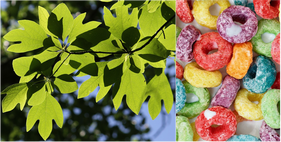 Crushed leaves and bark of younger twigs has a pleasant aroma of Froot Loops! Crushed leaves and bark of younger twigs has a pleasant aroma of Froot Loops! Black or sweet birch is known for its wintergreen taste, black cherry for its somewhat cherry or almond-like taste, and sassafras has flavors of spiced fruit. Since some of these species may also contain low levels of toxic compounds when ingested, you may opt for the alternative experience of scraping the bark of fresh twigs to reveal the aroma. Sassafras has a fruity aroma like that of Froot Loops! Using the sense of taste should be approached with caution. Even if a particular plant is known to be edible, it may still contain toxic compounds, certain people may have a sensitivity, or there may be similar looking plants that may be toxic. SENSORY JOURNEY
While we may spend more time indoors during the winter months, there are plenty reasons to get out and enjoy the season. If not just to get out in the sunshine or bathe in the green colors of pines, spruces, and other evergreens, I'm also drawn outside to witness the unique aspects visible in winter and appreciate the different experience they provide. Acknowledging and engaging in the changing of the seasons helps to build layers of memories, can strgengthen your emoitonal attachment to a place, and grow your appreciation of life. 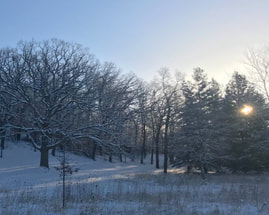 This time of year is interesting. Holiday, year-end, and new year celebrations abound. We find ourselves reflecting on the past in one moment. The next moment we are looking forward to the future. Outside, the cold has set in and often times we already have snow on the ground. Winter has arrived. When does winter “officially” begin? In meteorologic terms, it began December 1st. Astronomically speaking, it begins at the winter solstice. (Here's a great article about the seasons, solstice, equinox, aphelion, perihelion) At this point in our annual trip around the sun, the Earth's tilt has the northern portion positioned further from the sun than the southern hemisphere. Thus the reason the sun is lower in the southern sky rather than overhead during the middle of the day. This year, December 21st is the day where the tilt will reach its peak and begin to reverse. This pivot occurs at 9:59am on Tuesday, the winter solstice. I find inspiration in recognizing this day and moment as it means that we will start to see our daylight hours lengthening with each passing day. I love the cold and the snow, but can be challenged as there are days where I leave home before sunrise and return after sunset. By taking time to acknowledge the solstice, I am energized with positive emotions. I am aware of this specific point in the journey and in-tune with the present moment. Brighter days are ahead both literally and figuratively. 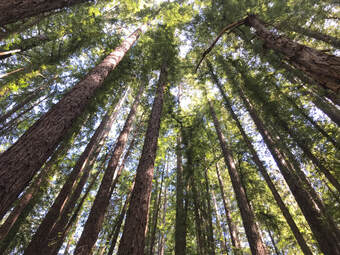 Where will you be Tuesday morning? I will be on the ground, but still outside amongst trees. I have picked out a trail with numerous pockets of conifers. WInter's color spectrum is dominated with browns and grays, which is why it is important to immerse myself in the greens of pines, spruces, cedars and hemlocks! Some people perceive winter as a long and dark time of the year. By taking time to celebrate the winter solstice, I am able to keep my focus on the fact that the amount of daylight is starting to increase. This lends itself to a positive mindset. Winter is the time to celebrate the daytime getting longer. Here comes the sun! After spending the past few weeks camping and hiking in various forests of the eastern U.S., I noticed marked differences in my demeanor and state of mind. Even with the sacrifice of physical comfort by sleeping in a tent rather than in our bed, I slept more soundly. I also noticed an improvement in mental clarity. In part this was due to the absence of the demands and distractions often encountered at home and work; but also from the peace that overcame me as I enjoyed the trees, sun, breeze, song birds, and sights in the forests and along the trails. We were immersed in nature. We felt great! 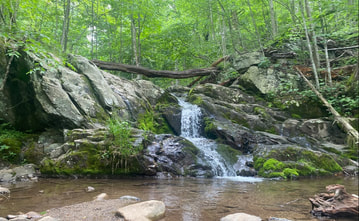 My wife and I spend a fair amount of time outdoors throughout the year. Whether it is taking trips like this, regular walks in the parks and trails near our house, or enjoying time in our backyard gardens, I know my time spent in nature nourishes my soul and has a positive impact on my health and well-being. Your personal experiences may be like mine and you also feel positive impacts from your time in nature. We hear about Nature providing benefits to our health and well-being, but are the claims real or do they just sound plausible? Sounds Good, Can You Prove It As it turns out, there are numerous studies that looked at and measured the impact of spending time in nature. There are also studies that looked at the human health impact when natural areas and trees have been removed from an area, as was the case in several communities who lost an extraordinary number of trees due to the invasive emerald ash borer. Those of us who have been aware of the positive impacts we experience may have been self-medicating by making time spent outdoors a regular part of our weekly routine. Obviously medical professionals need to operate on hard evidence rather than opinion, so thankfully this information has been making its way into the medical field and showing up in doctor’s prescriptions! Easier Said Than Done I am fortunate that my work schedule provides the opportunity for me spend time in nature most days of the week. Even my hobbies of walking, hiking, and gardening draw me outside. Thankfully my wife is able to motivate me to get outside to play, exercise, or simply relax when I have found myself content with sitting on the living room couch. With all the opportunities I have to get outdoors, I still look for assistance and guidance from professionals to help me maintain focus. A few years ago I found a health & wellness coach who has helped in my pursuit of a healthy life-style and other personal goals. With her expertise in health, wellness, and nutrition education & coaching, she has been great to work with and learn from in regard to the role that spending time in nature plays in her clients’ success. Recently she invited me to sit down with her and a colleague to discuss my experiences and our tree climbing programs. I know I need to be physically active and get outdoors, but that doesn’t mean I always have the motivation to move. What Does It Take to Get Me Outside My tips include:
As we discussed during our time together, part of the intent behind our tree climbing experience is provide a unique and exciting way to get outside, move, and connect with Nature. (The appeal of the climb lured her to join me in the tree for an additional segment you'll hear at the end of to the podcast)
With the energizing affect that comes with climbing tall trees, I hope it provides further motivation for participants to make spending time outdoors a regular part of their weekly schedule. 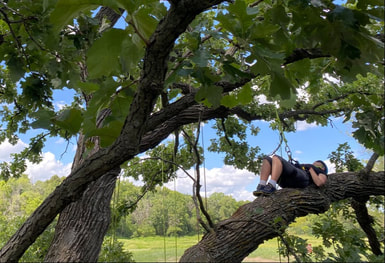 Where do you go to unwind, slow down, find peace? A walk at the end of the day helps to quiet my mind. My wife and I take weekend hikes which help us unwind and enjoy a peaceful morning together. Walking in parks lends itself to providing a calming effect after a busy day. Crossing paths with others is almost a given in these situations, and I enjoy the sense of camaraderie I feel as I nod to others who seem to be enjoying the same experience as me. However, there are times where I wish to be further removed. I like to find places that are accessible but where I may be one of the only people around. These days it is often that I need to hike further distances to get away from the more heavily trafficked areas. I don’t necessarily need to find a completely secluded spot, but it is nice to find a place where I can be alone for at least a short period. When I need further distance, I often find myself in the branches high above. Up there I usually only come across birds and squirrels. I have yet to cross paths with anybody while I’ve been climbing a tree. Energized yet at peace The energizing effects take hold as I leave the ground behind on my way into the branches. Once I reach my destination, be it the top of the tree or one of the many branches to sit on, I can focus my attention inward. The common city noises and chatter from others playing nearby may still be in earshot, but they are softened by the distance. Laying my head back on a branch and gazing into the canopy above, those distractions are gradually drowned out by the rustle of leaves in the breeze. This is when I notice that I have already begun to unwind and calm my mind. Up here I can enjoy the life in the canopy and the peaceful feelings that overcome me.  Taking it all in Sitting alone, looking down, you enjoy a view and perspective most people seldom have. It can feel like you’re floating above the daily grind and able to focus on the simple pleasures in your life. Back on the ground your worries and troubles wait for you. Up here though, those worries cannot reach you. You are free to enjoy your time alone. You can take the time to explore your thoughts and emotions. With your heightened energy level that comes with the location, you are likely to reconnect with yourself in a way that may escape your reach during the demands of your day. That’s how it is for me, which is part of what drives me to provide the opportunity for others to experience tree-time. Climbing tall trees is fun and why we offer the recreational experience. It is also therapeutic, and why I climb on my own or share a branch with a friend. You’ve heard the expression “Stop and smell the roses.” How about the leaves, blossoms, bugs and even fungus?! Join me in the tree to appreciate the little miracles that are right above your head. EVERYONE needs playtime! Play is an essential part of life. Children get it. Some adults have forgotten. Play is vital for the enjoyment of life as well as social, emotional, intellectual and physical development. Picture yourself playing within this week’s video. Come play with us! Register for a climb today and come experience it for yourself!
I spend time with trees by sitting beneath them or hiking through the forest. Of course, I also like to climb them. I’ve enjoyed climbing trees for as long as I can remember. The oak in our front yard in Miami was one of my favorite climbing trees growing up. It was a rite of passage when I could finally jump high enough to grab hold of the lowest limb and pull myself into the tree without any assistance from my older brothers or standing on my bike. “I used to climb trees.” I hear this quite often when I tell people what I do. After sharing enjoyable memories, some people follow up with, “it was so much fun.” Therefore, it begs the question, “Why did you stop?”
When most people think of tree climbing, they tend to envision free-climbing, using hands and feet to climb branches without the aid or safety of rope. Technical tree climbing utilizes ropes and saddles to climb trees. Each style of climbing offers a variety of benefits and experiences for the climber. Free Climbing Growing up in Puerto Rico and Florida, we climbed numerous rubber trees (Ficus elastica). Our hands coated in sticky sap enabled us grip and swing from their aerial roots like Tarzan! We could shinny up the schefflera trees and climb onto the roof of our house. We climbed and picked countless mangos, loquats and tangerines from trees around the neighborhood, bringing them home to feast upon them at the top of our favorite climbing tree. Those days of free-climbing involved smaller and even some medium sized trees. For the most part, climbing a tree in this manner requires that the tree have enough branches to provide hand and footholds. Free-climbing small trees calls upon our primal instincts as we explore these living jungle gyms. Free-climbing a tree without the use of rope, you are exposed to a higher risk of falling. I think this is the primary reason people are discouraged or even forbidden to climb trees, even though playgrounds are filled with structures for climbing and enabling children to get off the ground. The simple act of climbing develops a person’s hand-eye coordination and motor skills. Each step of the way while tree climbing, you are determining where to place your hands and feet to gain vertical height. Trees do not have a standard arrangement of limbs or spacing between branches like a fabricated jungle gym. Planning a few steps ahead is a necessity as the path is not a straight line up. Returning to the ground can be even more challenging. An adrenaline rush and flood of emotions accompanies this type of play. During our time in the tree, we are also rewarded with releases of “feel good” hormones like endorphins, dopamine and serotonin. You don’t need to know what these are because you can feel their effects even if you don’t know their names. I love reading the research about such benefits today as that helps fuel my passion for providing an incredible experience for people to spend time in the trees. Back then, all I cared about was that climbing trees was a fun and exciting way to spend my day. 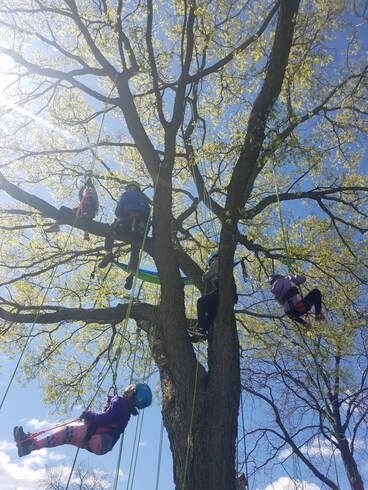 Technical Tree Climbing When we moved to St. Louis, we had a sugar maple that could be climbed, but it wasn’t nearly as much fun as my previous climbing tree. Aside from the maple, we had oaks, hickories, and elms that were too tall to climb since the lowest branches were about 20’ high. If you have the desire to climb into taller, larger, older trees, you are out of luck if they do not have low and small enough branches for climbing. Thankfully, ropes, saddles and specialized techniques allow us to climb into these magnificent trees. Climbing rope requires a unique set of motor skills and spatial awareness in addition to those skills we developed as free-climbers. It also requires the use of muscles you may not have known were there! Sitting back in your saddle and letting the tree and rope support your weight has an energizing effect. Once you climb into the crown of the tree and can play in the branches, you are continuously transferring your weight and sense of security between sitting in rope and being supported by a branch. The transition back and forth brings new challenges. This is part of what makes technical tree climbing a lot of fun and different from free-climbing. Once you begin to master the balance between using branches and using rope, you are better able to climb and explore the tree at will. You are able to enjoy the freedom of spending time in the branches without having to hold on. Another key difference is that, with rope, you can climb much higher. Some of the taller trees in Wisconsin allow us to ascend over 100 feet above the ground. The tallest trees in the world allow climbers to reach heights over 350 feet. While these heights sound impressive, the reality is that most people are challenged and impacted by reaching heights between 10 and 35 feet. The trees we climb around Wisconsin are perfect as they allow us to play in this realm. For those who like pushing the limits, I often include a few ropes that reach 40-50 feet during my climbs. In private excursions and guided climbs, we go even higher. In the end, the height each of us is most comfortable at will vary greatly. Using rope and saddle enables you to progressively challenge yourself to reaching new heights. Climb Trees
As a kid, I free-climbed trees because I didn’t know any other way. These days I climb using rope and saddle. Thanks to this hobby, I am able to explore amazing trees and chase views that few people will ever get to enjoy. I doubt my parents ever stopped to ponder the emotional and cognitive benefits I was receiving during my time in the trees. They knew it was important for kids to play outside because they could see the differences in my demeanor between those days and the ones I spent mostly inside in front of the tv and playing video games. Today, I notice differences in myself during and following my time in the trees. When I reflect back on my childhood, I am grateful my parents allowed me to climb trees. As long as you take into consideration that the tree you are climbing is a living being and do what you can to minimize your impact on the tree, I encourage you to get out and enjoy the trees. Take your children and loved ones with you. *Fine print: prior to entering a tree, I perform a thorough inspection to assess its health and structural integrity. There are a number of issues and conditions that can make a tree unfit for climbing. If you are unsure of the condition of your trees, please contact an ISA Certified Arborist and have them assess your tree (yes, even the small ones). If you are interested in climbing tall and mature trees, give me a call! Screen-time. It seems like we cannot avoid it. Growing up, screen-time was the television. For me that meant MTV, Discovery Channel, sitcoms or playing Atari. Today, screen-time also comes from our phones, tablets, watches, pc’s, laptops. At work, at home, in the car, in restaurants and bars, or even while we sit on a park bench. While I it can be difficult to truly grasp the numerous impacts screen-time has on humans, I recently had an experience that opened my eyes to the conditioning affect I have subjected myself to. For some people, online interaction is the equivalent of the in-person social interactions I am drawn to. When I consider the time I spend online, a fair percentage of it is with social media platforms, news feeds and email inbox. I engage with each of these in a similar fashion, scrolling through a never-ending feed of digital stimulation. Within a fraction of a second, I make a decision for the next course of action. If the item requires a relatively short amount of time for contemplation or consideration, like a picture, I can appreciate it for a few seconds before my thumb intuitively flips on to the next item. If the item holds some value or interest requiring more in-depth engagement, I might give it a minute, but no more. In many cases, the item gets flagged, saved or added to my list for later action. I believe this overabundance of information and stimulation is part of what makes our digital devices so addictive. As soon as I pick up my phone it’s as if I enter a trance where I scroll continuously until one item grabs my attention enough for me to take pause. While I may think I am learning or absorbing the information I come across, I question how much I retain in this state of mind as I cannot process completely before I am on to the next stimuli. This became uncomfortably apparent to me recently. Back in the Analog World One of my weekly goals is to spend one morning dedicated to reading articles, journals and magazines I have collected in my “future reading” pile. This stack of readings and bookmarks include the items from my digital binges, articles I had flagged for later, and notes I take from books I am reading. I was at the coffeeshop one of these mornings with the sole purpose of taking time to read through a small stack of professional journals and research articles that I had set aside. I had already thumbed through the journals and knew there were specific articles that I wanted to give more attention to. I settled in to enjoy quiet time with my readings over a cup of coffee. I began paging through until I came upon the first article of interest. Being somewhat technical in nature, it captured my undivided attention. That article had a lot of great information, and there were plenty more to go. Before long I reached the end of my stack. Looking down at my stack of journals, I had to laugh. Somewhere along the way I stopped reading articles and ended up skimming through the pages and dog-earing the interesting articles for future reading. What was I doing? I was there to read! It’s as if I am on a constant search for new information and answers to my questions, yet not taking the time to digest and process the information beyond face value. When I thought it through, I realized that I had unknowingly returned to my habit of mindless scrolling. My digital reflex had jumped into my analog world. Digital Fast It may seem easy to explain it away with the notion we hear in regard to shortening attention spans, but I doubt it is that simple. Do kids-these-days have shorter attention spans? Has my attention span been shortened in the digital age? I never pursued the field of psychology beyond a handful of introductory courses in college so I may date myself; but, every time I heard a ding on my phone or laptop, I pictured myself as one of Pavlov’s dogs. With each interruption no matter how brief, it typically results in at least a 10 to 15-minute disruption in my day as it takes that long to fully reengage my mind with the task at hand. Talk about a drain on productivity. It didn’t take too long for me to shut off notifications on my devices! I believe that maintaining ready access to social media, news feeds, and e-mail are a powerful distraction and hindrance to engagement with work, play, family and friends. How well do you stay in conversation with your spouse when out to dinner at a restaurant with 15 screens or your phone on the table? This leaves me wondering if attention spans are truly decreasing to a significant level, or how much of this has to do with distraction and conditioning? Move Forward by Leaving It Behind
It takes me long enough to sort through my thoughts and write an article. As I sit here at my laptop I know one thing is for sure; I’d be here all day if I did not have my email closed and phone in my bag. Removing these distractions appears to have a positive effect on my attention span. Keeping my phone in my bag or otherwise out of reach also goes a long way to breaking my sub-conscious habit of picking it up for no apparent reason. Picking it up of course being the trigger to my fingers’ conditioned response of bringing it back to life, sending me tumbling uncontrolled down the rabbit hole. Moderating screen time improves my work product and returns tremendous benefits for me psychologically and emotionally. Digital fasting helps me regain perspective and control of where I focus my attention. One of the aspects I enjoy about taking people into the trees is that everyone engages in the moment. Phones are set down, eyes look up to the branches above and the excitement builds. Being a unique and adventurous experience, it captures participants’ attention the moment they walk up to the tree. Some parents and teachers have wished me luck with their child or student, alluding to their short attention span or the idea that all they like to do is play on their phone. They assume I will have a hard time keeping their interest for two hours without digital stimulation. In reality, there are some climbers who wish to take their phone with them into the tree so they can get some pictures. Most do not. It is common for those who do ask to forget to even pull out their phone while they are climbing! Engaging in the activities you enjoy is great for keeping your attention in focus. Climbing requires some attention on the task at hand. During a climb, everyone needs to take a break. This is when you are able to sit in the saddle, take in the view, catch your breath, and breathe in the moment. You are present in the moment, processing the experience and your emotions. I find peace and a calm mind in activities like tree-time. I find the same when I disconnect.  It’s Not Easy Seeing No Green I enjoy and appreciate cold weather. The crisp air, clear blue sky, and visible plumes of frozen water crystals rising out of vent pipes are some of the details I enjoy on a cold winter day. Having lived in a variety of places and climates, from the tropics to the temperate, I understand why winter can be a challenging season for some. But I love the season because of the many changes taking place and the excitement for what may lie ahead. I also love snow. Watching it fall softly to the ground. Hearing it crunch beneath my boots. Sledding, cross-country skiing, and snow shoeing are possible thanks to snow. In winter, you may notice as you walk through the park or a forest, that the color spectrum is more in line with the urban landscape of concrete, bricks and blacktop. Shades of brown, black, gray, and white abound. Not only do we have fewer hours of daylight to brighten our mood and tend to stay inside to avoid the cold temperatures, winter also surrounds with a seemingly lifeless landscape due to the lack of flowers and leaves. This perception of lifelessness is due to the lack of green. The color green is overwhelmingly absent in winter. We feel the absence of this wonderful color that we associate with life, growth, health, and freshness. Think Green During a drive through the countryside this past week, I enjoyed the winter ambience created by snow covered fields and trees. The hardwoods provided a complex array of interwoven brown, gray and white lines. When I drove a stretch road that wound through an area with numerous eastern white pines and Norway spruce, I felt a sense of calm enter. These trees provided soft and orderly lines of green in contrast to the surrounding trees. The presence of green plays an important role on the human psyche. The differing shades of green are seen more readily by humans as they fall in the middle of our spectrum of visible light. Because of this, it is the easiest on our eyes and calming to the mind. Shades of green are known to have relaxing effects and help to alleviate stress, instill a sense of safety and increase level of concentration. They can also improve mood and creativity. These are some of the reasons I integrate greens into my home and work environments. (See “How the Color of Your Office Impacts Productivity”) Arborvitae, red-cedar, douglas-fir and pines play an important role in my landscape, in part because the color they provide in winter. While I can appreciate it from the warmth of my house, it actually draws me out for a stroll through my landscape regularly regardless of the temperature. I also incorporate live plants and scenes of nature indoors. With the office spaces I have had over the years, I always found a way to incorporate the color green as an integral part of the décor for these very benefits. In Search of Green
Of the images I have displayed in my office today, the focal point is a large print with the perspective gazing upward into the crown of a magnificent beech tree and the splendor of its green leaves. I still remember basking in the field of green shining down on me as I took the photo during my time with the tree. This energy continues to radiate as I sit in my workspace. The effects of working in the presence of this image are noticeable. I feel a calmness within, in much the same way as when I drove that stretch of road that took me through an oasis of green in the middle of winter. Fortunately, there are many places around Wisconsin you can immerse yourself in green this winter. In Waukesha County, I enjoy hiking through stands of conifers in Nashotah Park and Retzer Nature Center. Mukwonago park has a few nice groupings of conifers, one easily accessible as it is adjacent to the campground parking area. I encourage you to get out into an area with an abundance of green. Hike, ski or drive yourself someplace green. See if you can sense impact the color has on your mind and body. |
AuthorAs a G.O.T.C. Recognized Master Instructor & Facilitator, I.S.A. Board Certified Master Arborist, and T.C.I.A. Certified Treecare Safety Professional, Curt has spent over 30 years dedicated to the study and care of trees. Categories
All
Archives
May 2024
|
|
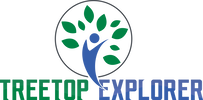




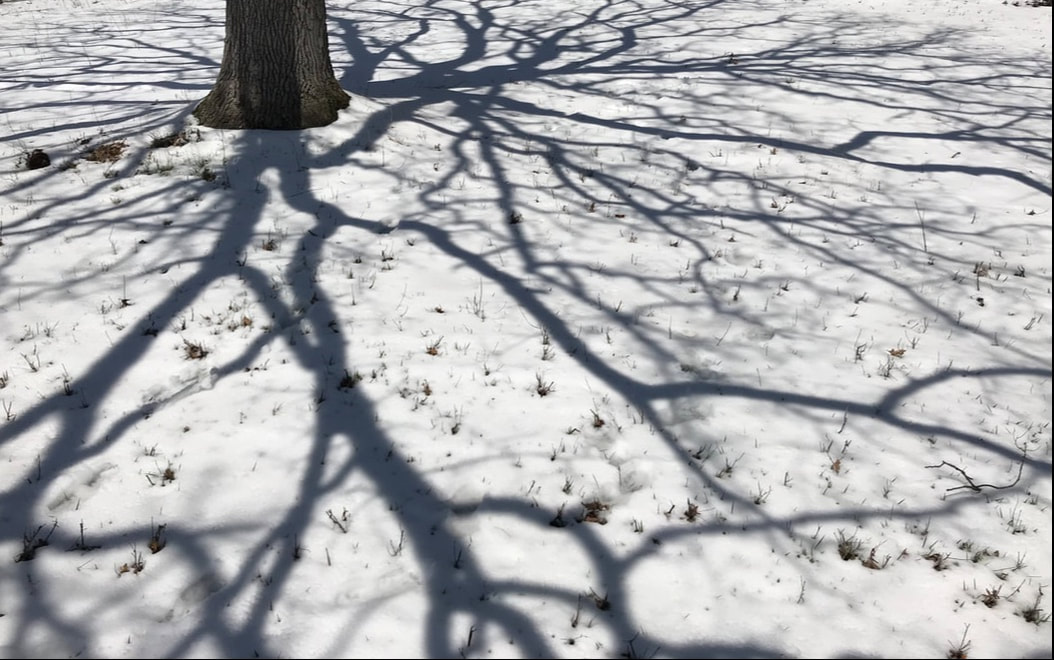

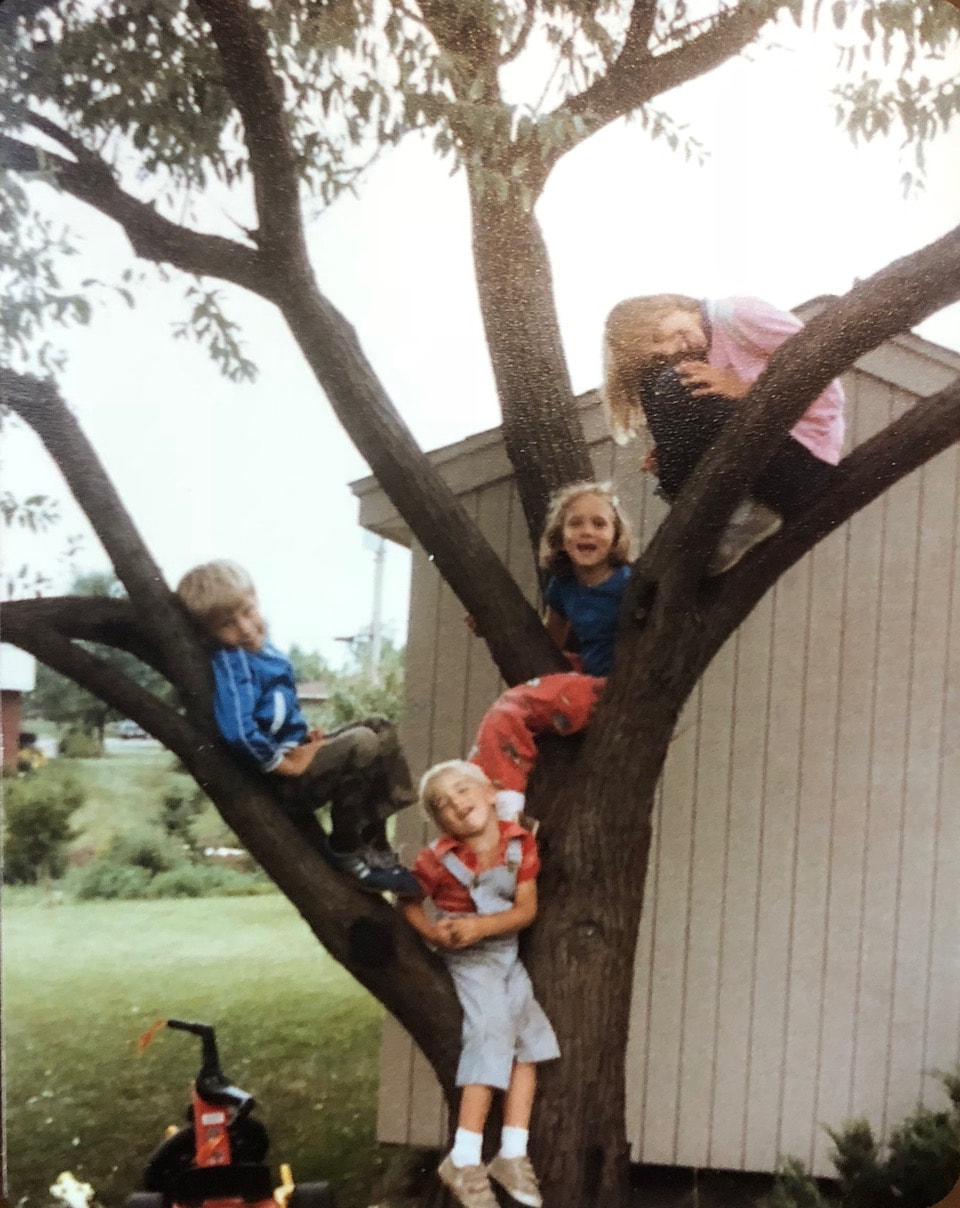

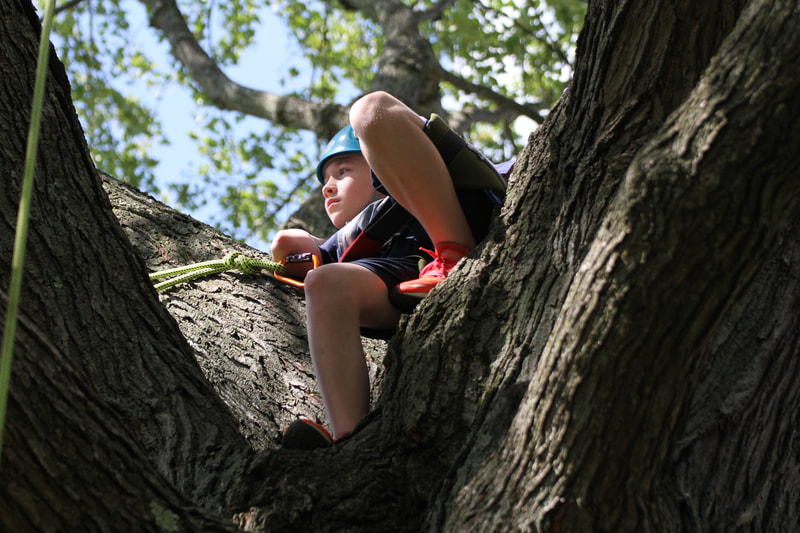
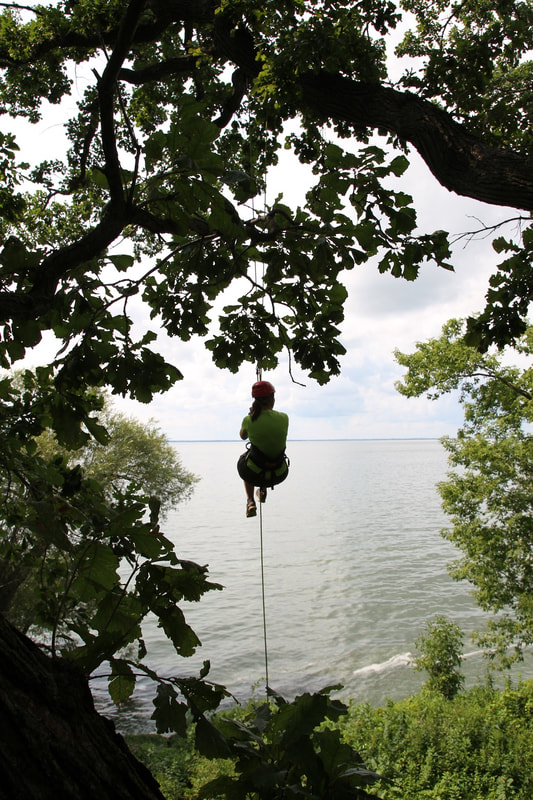
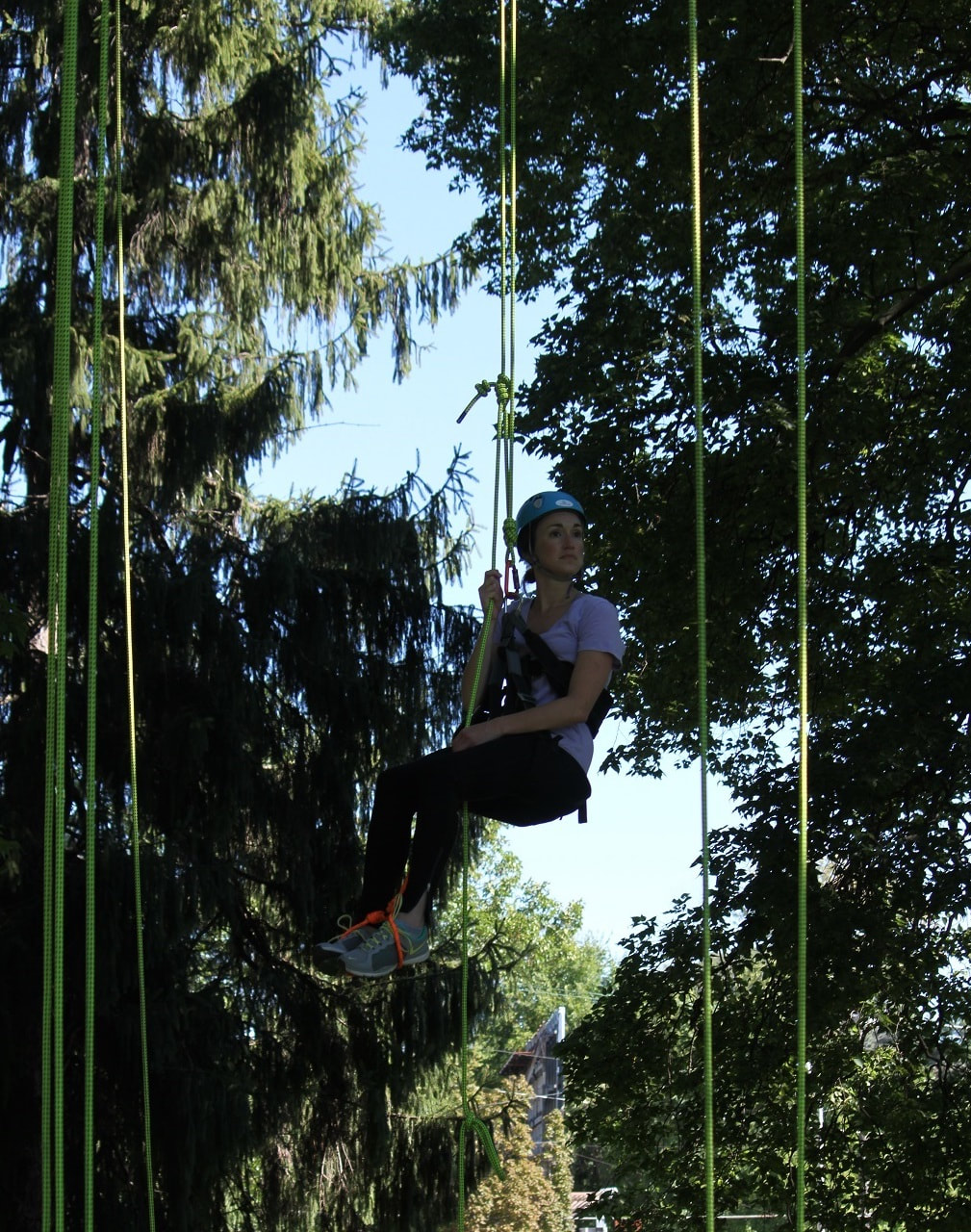
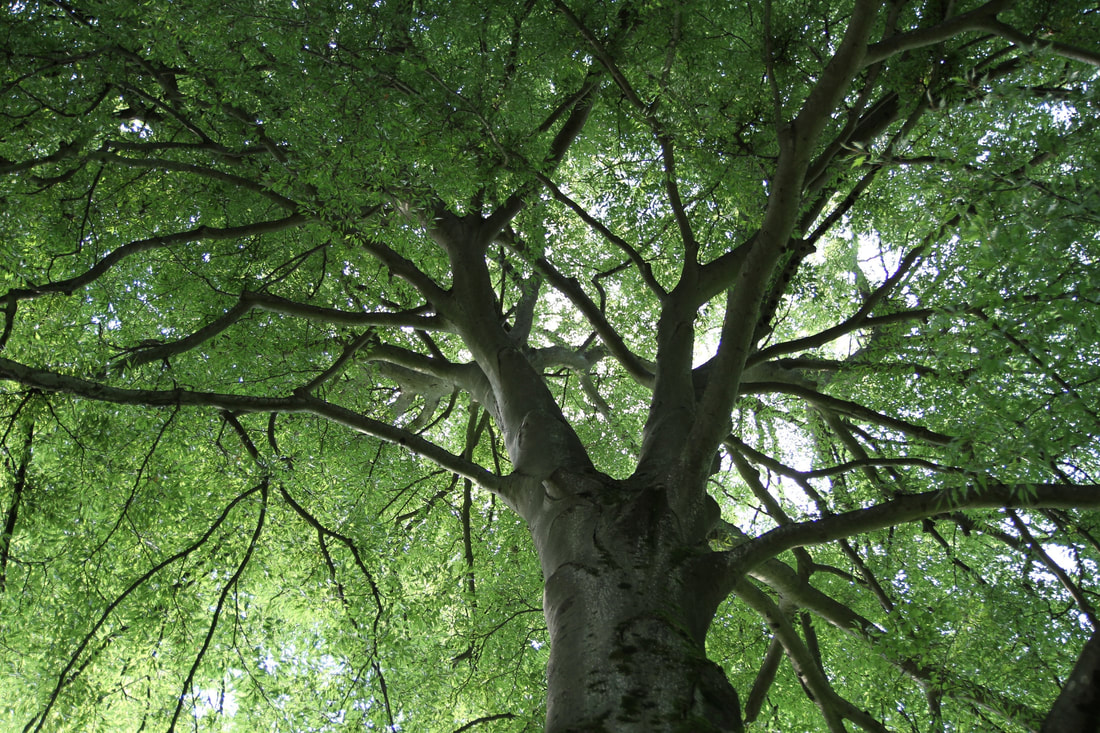
 RSS Feed
RSS Feed
